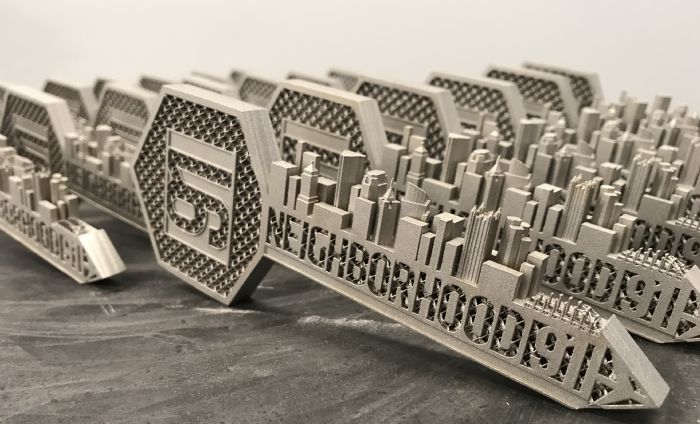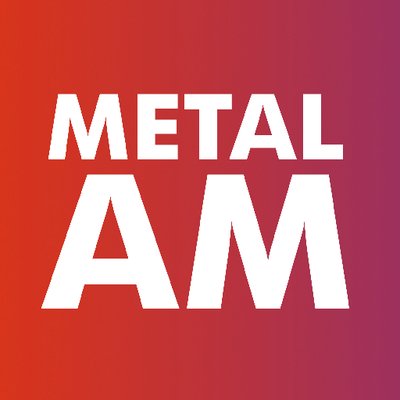“Additive manufacturing (AM) isn’t a technology, it’s a system of technologies.”

John Barnes is right on the money with this quote.
“AM requires machining, inspection, feedstocks…” continues Barnes, founder and managing director of The Barnes Global Advisors. “It sits in a complicated supply chain not only dealing with the United States, but internationally as well. The AM supply chain is a comprehensive issue, and presents a comprehensive problem.”
With these words in a recent webcast panel discussion, Barnes summarizes the need for Neighborhood 91, a new AM-centric development underway in the 195-acre Pittsburgh Airport Innovation Campus, adjacent to Pittsburgh (PA) International Airport.
Neighborhood 91, as its coalition of public and private partners describes it, “is the first development in the world to both condense and connect all components of the AM supply chain into one powerful production ecosystem.”
Indeed, connecting the various technologies that enable scaled industrial AM, along with the suppliers, makers and customers of AM parts, is Neighborhood 91’s raison d’etre. Pittsburgh International Airport and its Pittsburgh Airport Innovation Campus provides a microgrid for competitively priced power and reliability/ resiliency, recycled argon and communal powder facilities, according to coalition officials, who add that the airport location, near two major highways, 18 railways and the reportedly the largest inland port in the United States, enables people and products to reach anywhere in the world in 24 hr. or less. All of this speaks to another of the development’s goals: to minimize transportation and redundancy as a means to increase sustainability in AM. Neighborhood 91, as its coalition of public and private partners describes it, “is the first development in the world to both condense and connect all components of the AM/3D printing supply chain into one powerful production ecosystem.” Its home, at Pittsburgh International Airport and the Pittsburgh Airport Innovation Campus, provides a microgrid for competitively priced power and reliability/resiliency, recycled argon and communal powder facilities, according to coalition officials, who add that the airport location eases travel logistics for materials, products and people.The first anchor tenant at Neighborhood 91, railroad locomotive-technology provider Wabtec Corp., will have moved into 11,000 sq. ft. of space by the time you read this. Recently, Arencibia signed a letter of intent to build a 10,000-sq.-ft. plant in Neighborhood 91 to supply and recycle argon and other gases used for AM. And, at press time, Rusal America announced that it has selected the development for its new aluminum-powder business.
“En+ Group (Rusal America’s parent company) is the world leader in low-carbon aluminum through our Allow brand,” says C. Brian Hesse, president and CEO of Rusal America, in revealing the news. “By enabling sustainable operations, Neighborhood 91 is an ideal location from which to expand our presence in the AM-powders market without compromising on our core sustainability principles. We remain committed to enabling our customers to play a vital role in the sustainability value chain and to playing an active role in the innovation ecosystem at Neighborhood 91 in the years ahead.”
Adds Paul Hoback, chief development officer for Pittsburgh International Airport: “Rusal America’s commitment to Neighborhood 91 is another important step in the evolution of AM at the Pittsburgh Airport Innovation Campus. “We are thrilled to welcome Rusal America as the latest partner, further demonstrating the viability of Neighborhood 91 and the success of its ecosystem as a first-of-its-kind AM powerhouse.”
Neighborhood 91 is expected to benefit from R&D expertise offered locally by the University of Pittsburgh and Carnegie Mellon University, and a local workforce “that knows how to build things,” note development officials. Such capabilities radiate region-wide, with other AM-savvy institutions such as America Makes (Youngstown, OH), Case Western Reserve University (Cleveland, OH) and Oak Ridge National Laboratory (Oak Ridge, TN) all within a couple hours’ drive. The roster of AM neighbors helps provide the critical mass required for this development to succeed. Speaking of neighbors, Pittsburgh is home to 90 distinct neighborhoods, and coalition partners see Neighborhood 91 as the 91st, hence the development name.
Wabtec Recognizes The Potential “AM is capable of differentiating our products from the competition, as we’ve seen so far,” says Philp Moslener, corporate vice president of advanced technologies at Wabtec, a railroad locomotive-technology provider and the first anchor manufacturing tenant at Neighborhood 91. Neighborhood 91 offers opportunity for scaling as Wabtec plans for production of more than 25,000 metal-AM parts by 2025. “We can solve real-world problems,” Moslener continues, “making us much more competitive in a global market. But AM suffers from a big problem: costs. We need to continue driving our costs down and making AM technology a natural go-to solution. This is why we’ve tied in with Neighborhood 91.”Anchor tenant Wabtec has invested in metal AM since 2017 when, then a part of GE Transportation, it began prototyping via the laser powder-bed process, followed by binder jetting beginning in 2019 to print stainless-steel parts. Throughout this process, the company’s AM team identified some 250 components for locomotives, and heavy-haul and transit vehicles where AM might fit. Currently completing its move-in to Neighborhood 91, Wabtec will get on track with metal AM via its new inhouse SLM 800 quad-laser powder-bed printer.
“We’ll use this new dedicated facility,” says a Wabtec spokesperson, “to produce large-scale lightweight parts for transit and freight-rail applications. Converting these parts to AM will reduce lead times by as much as 80 percent.”
Read details on Wabtec’s railroad-part production via AM in 3D Metal Printing’s Winter 2021 issue. Here, we’ll focus on why Wabtec executives call AM one of the company’s technology pillars, and how Neighborhood 91 offers opportunity for scaling as Wabtec plans for production of more than 25,000 metal-AM parts by 2025.
In business for a century and a half after its founding by George Westinghouse and his invention of railroad air brakes in 1872, Wabtec now counts 27,000 employees worldwide, with 10,000 in the United States.
Manufacturing locomotives for the rail-freight market, “we have produced more than 23,000 locomotives globally, and one-fifth of the world’s trade is moved by a Wabtec locomotive,” says Philp Moslener, corporate vice president of advanced technologies at Wabtec, describing the company’s railroad prowess and foray into AM for attendees of the Neighborhood 91 webcast. In a nod to the company’s innovative and forward-thinking nature, Moslener reveals that Wabtec recently has developed a locomotive that runs solely on battery power—a huge deal as the typical diesel locomotive gobbles up $500,000 or more annually in fuel.
In the 2016-2017 timeframe where Wabtec began its journey into metal AM, powders, quality systems, etc. all revolved around aviation and aerospace, recalls Moslener.
“We began applying this to rail,” he says, “but immediately realized a problem.”
The problem: Where aviation and aerospace AM applications involve lightweight parts performing delicate operations at extremely high temperatures, rail demands robust, weighty parts—similar to forgings and castings. (Fun fact: In rail, added weight actually helps fuel economy, providing momentum and smooth hugging of the rails as a train moves.) To best proceed in developing needed rail parts and determining the best technologies, materials and machinery to do that, initiatives such as Neighborhood 91 provide ideal avenues to access expertise and needed partnerships.
“We don’t do additive to sell 3D-printed parts,” Moslener says. “We do additive to make our locomotives and engines more competitive. The more locomotives we sell, the more locomotives we have to build. We need to build engines, motors, alternators…everything that goes into a locomotive. This is where a public/private partnership (such as Neighborhood 91) works for us.
“AM is capable of differentiating our products from the competition, as we’ve seen so far,” he continues. “We can solve real-world problems, making us much more competitive in a global market. But AM suffers from a big problem: costs. We need to continue driving our costs down and making AM technology a natural go-to solution. This is why we’ve tied in with Neighborhood 91. It brings the support team to us, allowing us to reduce our costs, and be more efficient and quicker. Here, we can join a network of additive-minded companies and collaborate closely with them without having to send our parts a hundred miles away for development or processing. Having onsite gas recycling helps us reduce our costs; having a micro-grid helps us get cheaper power to run our machines; and having proximity to the airport allows us to save time when shipping our parts directly to other plants and global customers. So, we are quite excited to move in here and work toward our next level of activity.”
Public/Private Partnership Delivers
“With Neighborhood 91, we’ve really stitched together a campus that works,” offers Barnes of The Barnes Global Advisors, acknowledging the backing of federal, state and local government bodies, and support from U.S. Congressman Conor Lamb as well as the Allegheny County Airport Authority and its chief executive officer, Christina Cassotis. “The government is good at investing in infrastructure, and that’s happened here. Creating a public/private partnership around argon recycling and a powder-storage facility eases the introduction to the campus and makes it safer and more secure. This is a resilient manufacturing infrastructure.
“Neighborhood 91 will impact the region,” Barnes concludes, defining the region as extending east to Cleveland, OH, north to Erie, PA, and even up to the Toronto, Canada, area, and south to Oak Ridge, TN, and beyond. “The key to all of it is the public/private partnership. This isn’t a handout. We created this project, and we have buildings up and tenants moving in. As Congressman Lamb mentioned, the government did its part, now it’s time for private enterprise to come in and do its part. We see that. Companies are stepping up.” 3DMP


